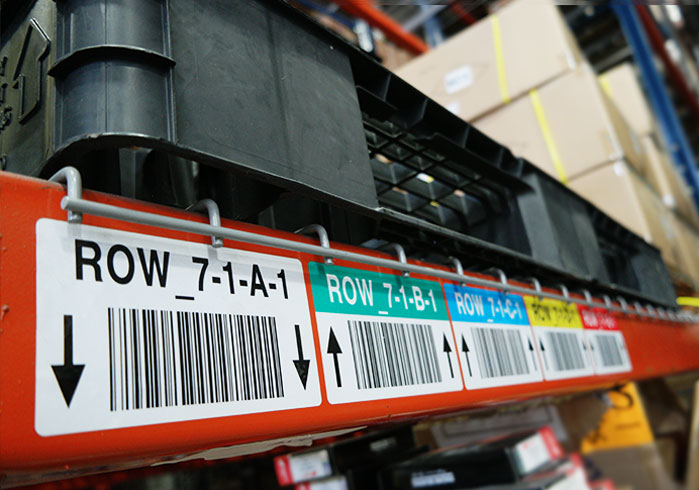
Order fulfillment is a much more complex and involved process than merely stacking up products in neat piles for delivery. The use of pick and pack methods is both an art and science. Through the use of the latest inventory management techniques, it is possible to make the process much more efficient.
Many choices are available including the use of a 3PL provider. Others opt to fulfill their own orders. Nevertheless, the standard protocols follow a similar process:
- Receiving orders: At this point, e-Commerce sales channels become integrated with warehouse systems. A packing slip is generated when a customer places an order.
- Picking orders: A warehouse worker will use the packing slip to select items from the shelves in the warehouse. This is the critical aspect of pick and pack services. By using an effective inventory storage strategy, it is possible to meet customer requirements. Depending on your sales volume and the nature of your business; you can alter the method accordingly.
- Packing orders: The items selected are forwarded to a packing station. Here, they are securely packed, sealed, and labeled at which point they are ready for shipping.
- Shipping Orders: The orders are sorted by the carrier before being placed on a loading dock. Your designated carriers can then pick them up at the end of the day.
There are many important and complex considerations in this seemingly simplified process. Careful planning and the use of information is an important consideration; regardless of whether you are a small, medium, or large business.
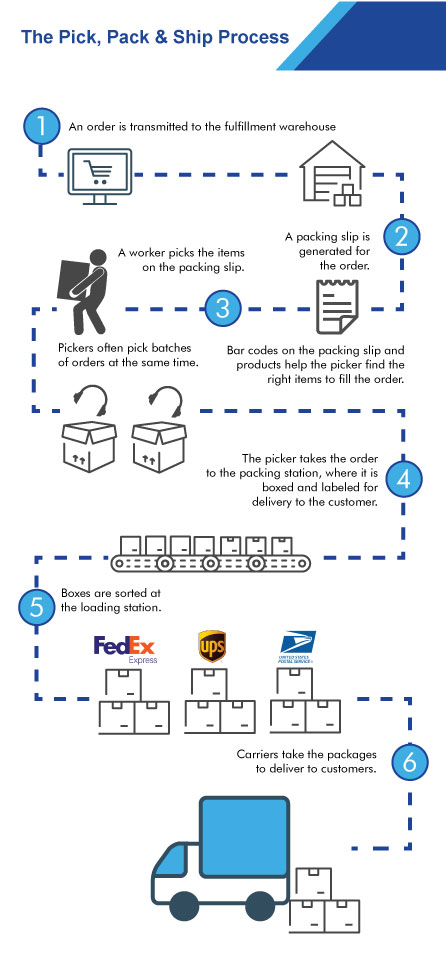
A brief definition of pick and pack methods
One of the tricks to understand pick and pack methods is to follow patterns that are similar to the ones used in your daily life. For example, you might organize the inventory in much the same way as you organize your closet. Items are grouped depending on similar characteristics.
You might also use an assembly line, with a specific approach such as “first come, first serve” or “last in, last out”. It is important to remember that as the business expands, you need to also incorporate much more sophisticated approaches. In any case, different pick and pack methods are used to reduce mistakes and save resources.
What are the key terms that you need to know?
- Piece picking: Here, you take the packing slip for a single order and process it as explained above. This works well when you have a small business that only receives a few orders each day.
- Batch picking: This is an approach that groups together different items for different orders. These items are often associated because they are found in the same or nearby area of the warehouse. Ultimately, you can use this method to give the order pickers the most efficient route to the product and around the warehouse. You can pick an item that is needed for several orders and then redistribute it to the specific orders. Even smaller businesses can use this approach if they have a high enough volume of orders. The use of pick and pack software is essential here.
- Zone picking: This is a great technique when working with fulfillment warehouses. The pickers will stay in a particular zone of the warehouse. They will then pick the products located in their zone for each order. The order is then passed on to a worker in the next zone. The order, therefore, passes through all the zones that are indicated on the packing slip before proceeding to the packing station. This approach requires very complex coordination and therefore the use of software is of the essence.
- Wave picking: This is a combination of zone and batch picking. The warehouse attendants will pick items within a zone for a batch of orders rather than a single order. The batch will then be passed to the next zone for picking.
Pick and Pack Methods
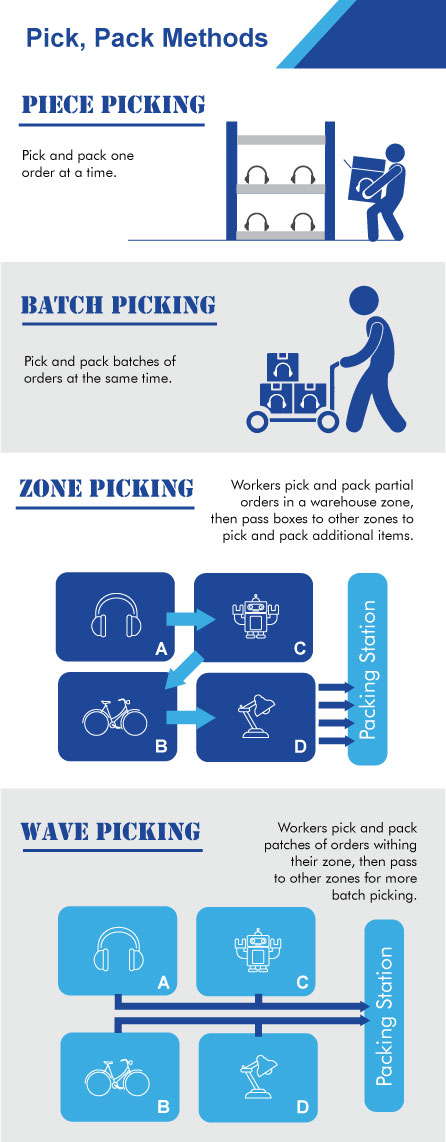
What Inventory Storage Strategies can you use?
For many businesses, intuition, skill, and experience represent the way forward when dealing with e-Commerce. However, inventory management also calls for an understanding of organized chaos. In the beginning, orders are easy to sift through and classify. Logic and organization are very effective here.
Pick and pack methods call for a different approach and attitude altogether. The kind of detail that focuses on individual orders that you could use in a small undertaking (such as arranging your closet); will not do when dealing with larger inventory. In this case, you have to introduce chaos into your inventory management.
What is chaotic inventory management?
Under chaotic inventory management, products are placed randomly on shelves. Instead, products that are related or similar will be nearer to each other. That means that you can pick different versions of the product depending on the order. It is a bit like being able to order different sizes of a pair of black trousers depending on the specifications laid out by the client.
Ironically, this chaotic inventory management tends to reduce error rates. That is because there is less chance of people mistaking products and product categories. The use of inventory management software will make things even clearer because it helps to map the products that are located within your warehouse. All you have to do is to read from the packing slip and move to the allotted area. This software might also show you the most efficient routes.
Volume and class-based inventory management
Two more types of inventory management are commonly used today and both are compatible with chaotic inventory management. The first is the volume inventory storage method which places SKUs with the highest turnover closest to the packing station. Products that sell the slowest are stored in the farthest location. Hence, pickers take as few steps and as little time as possible during the day as they pick orders.
Class-based inventory management is the next alternative. Here, items are grouped into classes based on a shared trait. you can use the turnover rate or packing style to classify products. For example, larger items that do not require an over-box might be grouped. Other classification criteria could include whether the items are packed with kraft paper or bubble wrap.
What are mobile shelf-based order pick systems?
Some businesses are using mobile shelf-based order pick systems or MSOP. Robots bring shelves to the picker and then return them to the warehouse floor while the picker stays stationary.
Order Packing Best Practices
- Prepare enough infill in the box to protect the products during shipping.
- Ship the products in the smallest box possible to reduce DIM weight charges.
- Re-scan the products for each order to make sure they are correctly packed.
- Use pick and pack software to calculate the size of the box needed for each order.
- Include infill instructions for each order to improve your pick and pack methods. This allows the packer to quickly reach for the proper packing materials for each order.
Packed orders will then go to the loading dock to be sorted for pickup by carriers such as FedEx, UPS, and USPS.
Pick and Pack Software
This software helps improve the efficiency and accuracy of your pick, pack, and ship systems. It can generate appropriate barcodes, batch orders, and perform inventory management tasks. The market offers a wide range of choices and you may even use multiple apps that are compatible with each other.
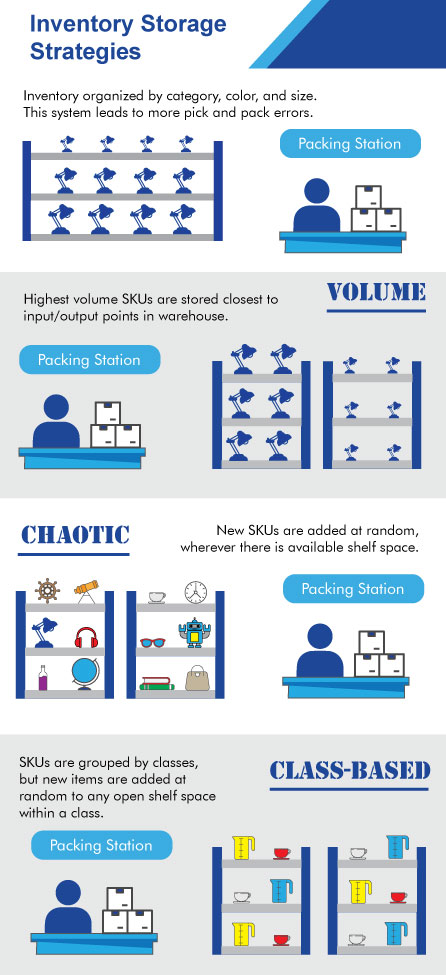
Inventory Management and Outsourcing
Once your e-commerce enterprise has outgrown the fulfillment capacity you have, it makes sense to outsource some or all of the functions to a 3PL provider. One of the advantages of outsourcing is it allows you to streamline your operations. Here are other benefits
- Implement warehouse management software and keep it updated.
- Use a barcode system to scan multiple products and orders multiple times.
- Use a system of checks to catch errors.
- Calculate exact dimensions to find the right boxes for each order.
- Use data from the order and a custom box machine to ship orders in boxes with the exact dimensions required.
Wrapping Up
To fulfill your business needs and the demands of your customers you should have an effective pick, pack, and ship methods. The use of technology makes this process much easier and more efficient. When your capacity does not meet those requirements you might consider outsourcing this service.

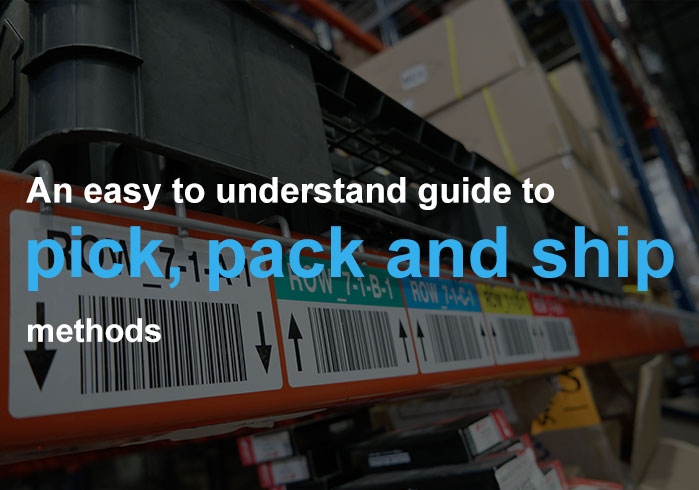

2 Comments on “An Easy to Understand Guide to Pick, Pack and Ship Methods”
Hello Eliana! What a fantastic blog. And, yes I agree with you at this point that, “The use of pick and pack methods is both an art and science.” The order fulfilment of products and their delivery is not an easy task to be done. I thank you for recommending the point of “Careful planning and the use of information”. It’s a basic era that every business owner should know to grow up the business. Keep posting!!
Great insights. I read many other articles on this topic, but this blog has given me fair knowledge. Thanks a lot.